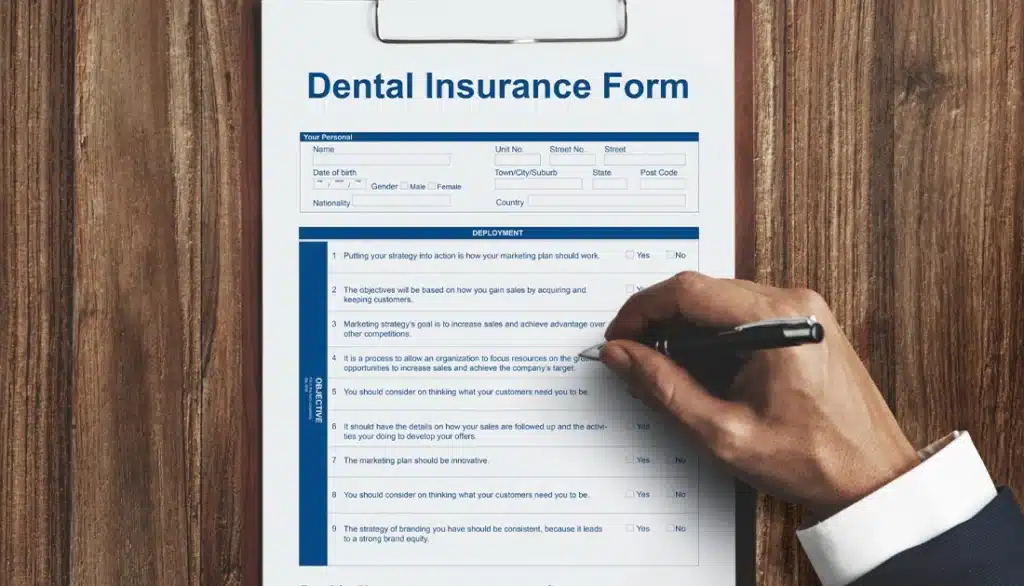What is Balance Billing in Dental Insurance? Complete 2025 Guide

What is Balance Billing in Dental Insurance? Complete 2025 Guide

What is balance billing in dental insurance? Balance billing occurs when your dentist charges you the difference between their fee and what your insurance covers. This common practice in dental care can result in unexpected expenses that catch patients off guard. Understanding balance billing in dental insurance is essential for managing healthcare costs and avoiding surprise bills that can strain your budget.
What is Balance Billing in Dental Insurance: The Fundamentals
Balance billing occurs when your dental provider charges you for the difference between their full fee and the amount your dental insurance plan agrees to pay. Unlike your regular copayments, deductibles, or coinsurance, balance billing represents an additional cost that many patients don't anticipate.
Here's how it typically works: Let's say your dentist charges $200 for a dental filling, but your insurance plan's maximum allowable charge (also called the "allowed amount" or "usual and customary rate") for that procedure is only $150. Your insurance might cover 80% of the allowed amount ($120), leaving you responsible for your 20% coinsurance ($30). However, if your dentist is out-of-network, they can also balance bill you for the remaining $50 difference between their fee and the insurance allowable amount.
This means your total out-of-pocket cost would be $80 ($30 coinsurance + $50 balance bill) instead of the $30 you might have expected based on your insurance plan's coverage percentage.
How Balance Billing Works in Dental Insurance Plans
The likelihood of encountering balance billing largely depends on whether your dentist is in your insurance network or not.
In-Network Dentists
When you visit an in-network dental provider, you're generally protected from balance billing. These dentists have contractual agreements with your insurance company that require them to accept the insurance plan's allowed amount as payment in full for covered services. They cannot charge you more than the predetermined copayment, deductible, or coinsurance amount specified in your plan.
For example, if an in-network dentist normally charges $200 for a procedure but your insurance allows $150, the dentist must write off that $50 difference. You'll only pay your portion according to your plan's terms.
Out-of-Network Dentists
Out-of-network providers have no contractual obligation to accept your insurance plan's allowed amounts. They can charge their full fee and bill you for any amount not covered by insurance. This flexibility allows them to balance bill patients for the difference between their charges and insurance payments.
However, it's important to note that even out-of-network dentists must provide good faith estimates for treatment costs under recent federal regulations, helping patients understand potential expenses before receiving care.
When Does Balance Billing Happen in Dental Insurance?
Routine Preventive Care
Even routine cleanings and checkups can result in balance billing if you visit an out-of-network provider. While many insurance plans cover preventive care at 100%, this coverage typically applies only to in-network providers and up to the plan's allowed amount.
Restorative Procedures
Complex procedures like crowns, bridges, and root canals often involve balance billing because of the significant difference between provider fees and insurance allowable amounts. Specialist procedures are particularly susceptible to balance billing due to higher costs and potentially limited network participation.
Emergency Dental Care
Dental emergencies present unique balance billing scenarios. While you may not have time to verify network status during a true emergency, you might face substantial balance bills later. The federal No Surprises Act provides some protections for medical emergencies, but dental care is generally exempt from these protections.
Specialist Referrals
When your general dentist refers you to a specialist (like an oral surgeon or periodontist), that specialist may not be in your insurance network even if your referring dentist is. Always verify network status before specialist appointments to avoid surprise balance bills.
Balance Billing in Dental Insurance: Legal Framework and Patient Rights

Federal No Surprises Act and Dental Care
The No Surprises Act, which took effect in 2022, provides significant balance billing protections for medical care but has limited application to dental services. Balance billing rules under the No Surprises Act now prohibit charging the patient for any costs not paid by the insurer. This does not apply to dental plans. Dental plans are allowed to surcharge patients for unpaid costs.
However, the Act does require dental providers to provide good faith estimates for uninsured patients or those receiving services from out-of-network providers, helping patients understand potential costs upfront.
State Regulations
Balance billing regulations vary significantly by state. Some states have implemented consumer protections that limit balance billing in certain situations, while others allow the practice with few restrictions. Check your state's insurance regulations or contact your state insurance commissioner for specific information about balance billing protections in your area.
Insurance Plan Types
Different types of dental insurance plans offer varying levels of balance billing protection:
Dental Health Maintenance Organizations (DHMOs): These plans typically provide the strongest protection against balance billing because they require you to use network providers for all covered services.
Preferred Provider Organizations (PPOs): These plans offer partial protection by providing higher benefits for in-network care but still allow out-of-network services with potential balance billing.
Indemnity Plans: Traditional fee-for-service plans often provide the least balance billing protection, as they may reimburse a percentage of charges regardless of network status.
How to Identify Balance Billing in Your Dental Insurance Claims
Pre-Treatment Planning
Before receiving dental care, especially for expensive procedures, ask your dental office about:
- Whether they participate in your insurance network
- Their fee for the proposed treatment
- Your insurance plan's allowed amount for the procedure
- Any potential balance billing amounts
Insurance Verification
Contact your insurance company directly to verify:
- Provider network status
- Your plan's allowed amounts for specific procedures
- Your remaining deductible and annual maximum benefits
- Specific coverage percentages for the planned treatment
Written Estimates
Request written treatment estimates that include:
- Total procedure costs
- Insurance coverage amounts
- Your expected out-of-pocket expenses
- Any potential balance billing charges
Proven Strategies to Avoid Balance Billing in Dental Insurance
Choose In-Network Providers
The most effective way to avoid balance billing is to receive care from in-network dentists. Use your insurance company's provider directory to locate participating dentists in your area, and always verify network status before scheduling appointments.
Negotiate with Out-of-Network Providers
If you prefer to see an out-of-network dentist, try negotiating their fees. Many providers are willing to:
- Accept your insurance plan's allowed amount as payment in full
- Offer payment plans for balance billed amounts
- Provide discounts for cash payments
- Match in-network provider fees
Understand Your Benefits
Thoroughly review your dental insurance plan documents to understand:
- Network provider lists and locations
- Coverage percentages for different service types
- Annual maximum benefit limits
- Deductible amounts and requirements
Consider Alternative Payment Options
If balance billing is unavoidable, explore options such as:
- Healthcare financing programs (like CareCredit)
- Flexible spending accounts (FSAs) or health savings accounts (HSAs)
- Provider payment plans
- Dental discount programs
What to Do When You Face Balance Billing in Dental Insurance

Review the Bill Carefully
When you receive a balance bill, examine it thoroughly to understand:
- The services provided and their costs
- Insurance payments and adjustments
- Your responsibility for copayments, deductibles, and coinsurance
- The specific balance billed amount
Verify Insurance Processing
Contact your insurance company to confirm:
- Claims were processed correctly
- Provider network status at the time of service
- Benefit calculations and allowed amounts
- Any errors in claims processing
Communicate with Your Provider
If you believe a balance bill is incorrect or excessive:
- Request an itemized explanation of charges
- Ask about payment plan options
- Inquire about financial hardship programs
- Negotiate the balance billed amount
Know Your Rights
Understanding your rights regarding balance billing can help you respond appropriately:
- Review your insurance plan's terms regarding balance billing
- Check state regulations that may limit balance billing
- Consider filing complaints with state insurance commissioners if you believe billing is inappropriate
- Seek assistance from patient advocacy organizations if needed
Balance Billing Impact Across Different Patient Groups
Families Managing Dental Insurance Balance Billing
Balance billing can be particularly challenging for families, as children often require regular dental care and potentially expensive orthodontic treatment. Many pediatric dentists participate in insurance networks, but orthodontists may be more likely to be out-of-network, leading to significant balance billing for braces and other treatments.
Senior Citizens
Older adults may face unique balance billing challenges, especially those with Medicare. Since Medicare provides limited dental coverage, seniors often rely on Medicare Advantage plans or separate dental insurance, which may have more restrictive networks and higher out-of-pocket costs.
Rural Communities
Patients in rural areas may have limited access to in-network providers, making balance billing more common. The limited number of dental providers in rural communities may mean longer travel times to reach in-network dentists or acceptance of balance billing from local out-of-network providers.
Technology Solutions for Balance Billing in Dental Insurance
Electronic Benefit Verification
Modern dental practices increasingly use electronic benefit verification systems to check insurance coverage in real-time. These systems help identify potential balance billing situations before treatment, allowing patients to make informed decisions about their care.
Treatment Planning Software
Advanced treatment planning software can help dental offices provide more accurate cost estimates, including potential balance billing amounts. This technology enables better financial discussions between providers and patients before treatment begins.
Mobile Apps and Online Portals
Many insurance companies now offer mobile apps and online portals that allow patients to verify provider network status, check benefit information, and estimate out-of-pocket costs before receiving care.
Future of Balance Billing in Dental Insurance Industry
Increasing Transparency
The healthcare industry is moving toward greater price transparency, and dental care is following this trend. More dental practices are providing upfront pricing information and detailed cost estimates, helping patients understand potential balance billing before receiving treatment.
Network Adequacy Requirements
Some states are implementing stricter network adequacy requirements for dental insurance plans, potentially reducing balance billing by ensuring adequate provider coverage in all areas.
Alternative Payment Models
New payment models, such as direct primary care for dentistry and dental membership programs, may provide alternatives to traditional insurance that eliminate balance billing concerns.
Take Control: Your Next Steps for Managing Balance Billing in Dental Insurance

Understanding what is balance billing in dental insurance empowers you to make informed decisions about your dental care costs. Balance billing remains a significant factor in dental healthcare expenses, but with proper knowledge and planning, you can minimize its impact on your budget.
Ready to protect yourself from unexpected dental costs? Start by reviewing your current dental insurance plan, locating in-network providers in your area, and discussing potential balance billing with your dentist before any major procedures. Remember, the best defense against balance billing is staying informed and proactive about your dental insurance coverage.
For more dental insurance tips and cost-saving strategies, bookmark this guide and share it with family members who might benefit from understanding balance billing in dental insurance.




